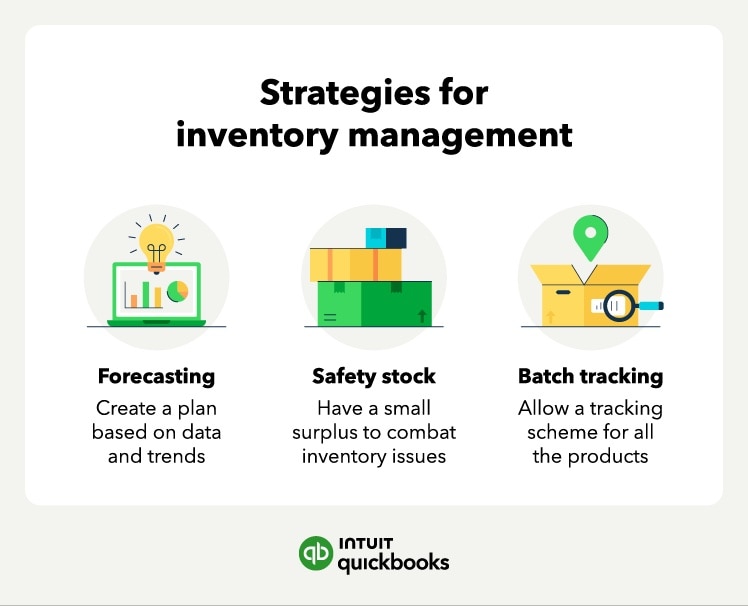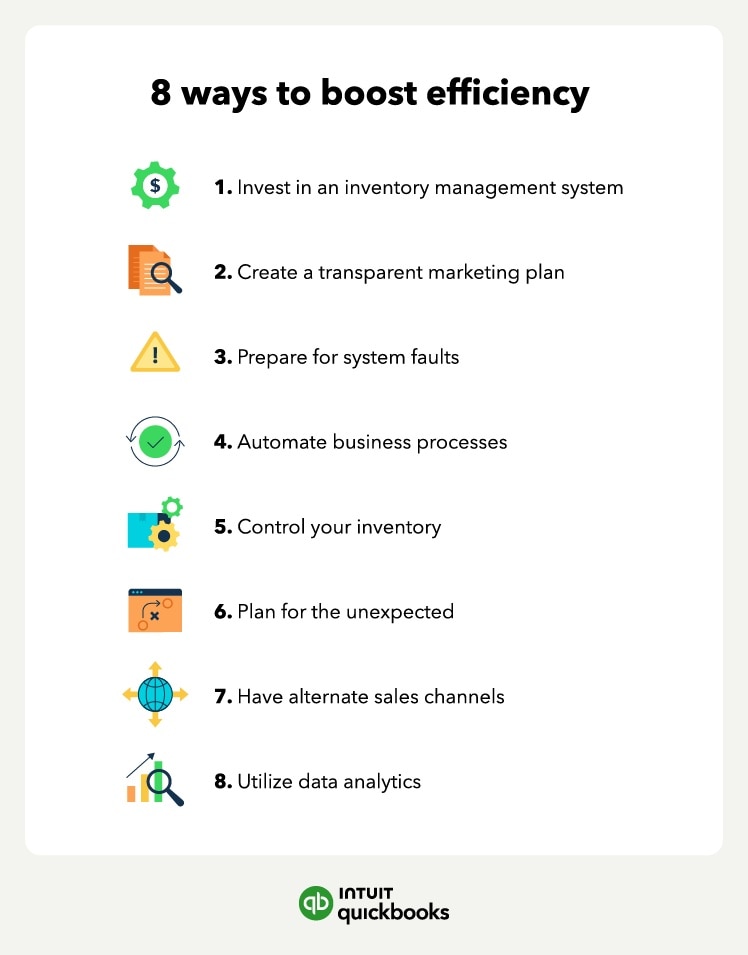The best inventory management strategies all contain some sort of efficiency aspect that allows business owners to streamline processes and essentially make life easier for them. For instance:
- Inventory forecasting: allows owners to create a plan based on historical company data and trends
- Safety stock: allows for a small surplus that can accommodate a random influx of orders or supplier strain
- Batch tracking: allows you to track your goods to and from the supplier to optimize stock efficiency
Better analytics and control are at the core of developing a more agile supply chain model. It’s likely not a change you’ll be able to implement overnight, but the following strategies are a good place to start.
1. Invest in the proper inventory management system
Collecting better analytics requires companies to adopt the right solutions. A sound inventory management system is the beating heart of any enterprise, offering real-time access to data that enables business leaders to forecast trends and shifts in buyer needs, as well as gain full transparency into demand and inventory levels.
Inventory management systems output powerful analytics and provide much-needed visibility into operations. For example, monitoring run rate to gain visibility into how much of an item you are selling at a given time helps accurately predict future demand.
2. Prepare for system faults
When operations are running smoothly, vulnerabilities can fly under the radar. Unexpected events, like COVID-19, can hit supply chains hard, quickly revealing operational deficiencies. Understanding where weaknesses lie requires a lot of digging that extends beyond first- and second-tier suppliers to distribution facilities and transportation hubs.
Supply chain mapping is an exercise worthy of a business’s time and cost investment. This method allows a business owner to pinpoint potential vulnerabilities and reduce risk by identifying:
- Alternative suppliers
- Different distributors
- Multiple transportation providers
3. Control your inventory
Don’t rely on suppliers and providers to accurately report on inventory levels. Take the lead role by regularly monitoring, auditing, and managing inventory in your system to maintain an accurate picture of goods. Some tips include:
- Keep an eye on what’s coming into your supply chain
- Regularly check the quality as well as the quantity you receive
- Conduct inventory checks periodically throughout the month or quarter
4. Identify alternate sales channels
During the COVID-19 pandemic, supply chains broke down and storefronts were forced to close, with business owners frantically moving online to continue operations. However, many failed to properly analyze costs. For example, moving sales to an online marketplace (like Etsy) allowed owners to stay in front of their target audience, but at a lower rate of profitability.
While the transition from brick-and-mortar to online seemed like a sound alternative for many businesses, the percentage of profit lost to marketplace vendor fees took a big bite out of the bottom line. Shifting to online platforms from brick-and-mortar needs to be calculated and done at the right place to ensure success. This means that identifying alternative and profitable sales channels is required as the market becomes more digitalized.
5. Be transparent about your offerings
Being transparent about your offerings helps clear the air for your customers and gives them a better understanding of your product offering. There are several ways to help accomplish transparency, including:
- Make sure that your website is up to date
- Creating a marketing message that resonates with target audiences
- Having clear and concise product descriptions
Now is the time for message unity across departments and roles to ensure consumers are aware of what you sell and why the shift occurred.
6. Automate when possible
Business process automation is the task of implementing technology to automate repeatable and sometimes mundane business tasks. These could include email responses, recurring invoices, or payroll, for example. Automation can also ease the burden of business ownership by creating a more efficient inventory management system through:
- Simplifying processes with a hands-off approach
- Eliminating human error
- Creating a streamlined effort that utilizes software to automate the inventory system
- Plan for the unexpected
Unforeseen demand and economic shifts can happen, and as a small business owner, it can only benefit you and your business to be prepared. Preparedness can look different for different industries, but for those that offer products and need inventory on hand, it would be wise to:
- Maintain a safety stock
- Have backup suppliers and know their wait times
- Understand the market and historical data to predict potential difficulties
While it’s not always fun to think about something negative affecting your business, the reality is that preparing for the unexpected can help you weather hard times and be confident in your ability to sustain the business.
8. Take advantage of data analytics for optimization
Data analytics can also benefit your inventory management by eliminating the guesswork pertaining to what you have in stock, what's needed, and where it’s coming from. Data is an extremely valuable tool for a small business owner. It can tell you things like:
- Company cost history
- Projected shortages and surpluses
- Customer buying trends
- Product successes and failures
Using Advanced Inventory management can give you the data and insight to make informed decisions and optimize your business efforts.
Incorporating inventory management for a successful business
Success in an ever-changing world requires planning, forecasting, and strategizing. This requires companies to leverage business intelligence to properly forecast buyer behavior to ensure supply and demand are in sync. It means developing a strategy to reduce the risk of disruption and ensure inventory control via alternative sources. And, finally, it means adopting a new mindset as we continue to learn the best strategies for inventory management.
Learn how QuickBooks Enterprise can help you take control of inventory management with Advanced Inventory.















